Food (Bali)
Balinese cuisine is a rich tapestry of flavors, influenced by indigenous ingredients, regional traditions, and cultural nuances. The food of Bali is a captivating fusion of vibrant spices, aromatic herbs, and a balance of sweet, savory, and spicy elements that tantalize the taste buds and reflect the island’s diverse cultural influences. From succulent satays grilled to perfection to fragrant rice dishes infused with coconut and unique herbs, Balinese cuisine is a sensory journey that captures the essence of the island’s unique identity. In this culinary haven, each dish tells a story, inviting you to savor the authentic tastes of Bali’s gastronomic treasures.
Warung
First things first, Warung are roadside stalls or small restaurants in Bali. They range from a small shack to medium restaurants serving all kinds of Balinese food. These are the best places to have food. We went to different small home run Warung for our meals. The main reason was that we wanted to cut down on the cost of food. Another reason was that we wanted to experience authentic home cooked Balinese cuisine. We also bought food from vendor carts. Our food experience was extremely awesome.
Rumah Masakan Padang
Apart from the Warung you will come across some stalls with banners of Masakan Padang. These are buffet food stalls where you will find a variety of dishes to choose from. You may select what you like for a meal along with rice and your bill depends on what you ordered. If you like your food hot, you would need to ask the vendor to heat it before serving. Mostly the items get cold as they are prepared beforehand. That too will depend on the facility.
Homemade packed meals
We came across small home run stalls in Nusa Penida which sold small packets of home cooked food items like rice, curry, beans, sautéed vegetables, eggs, noodles, salad, fish, meat etc. Each packet was priced at 5.000-10.000 IDR and you could purchase several items to make your own customized meal. We had our breakfast one day from these stalls. But, we did not find similar stalls in mainland Bali. We assume that it is a way of life in the lesser developed places where local way of life is still popular.

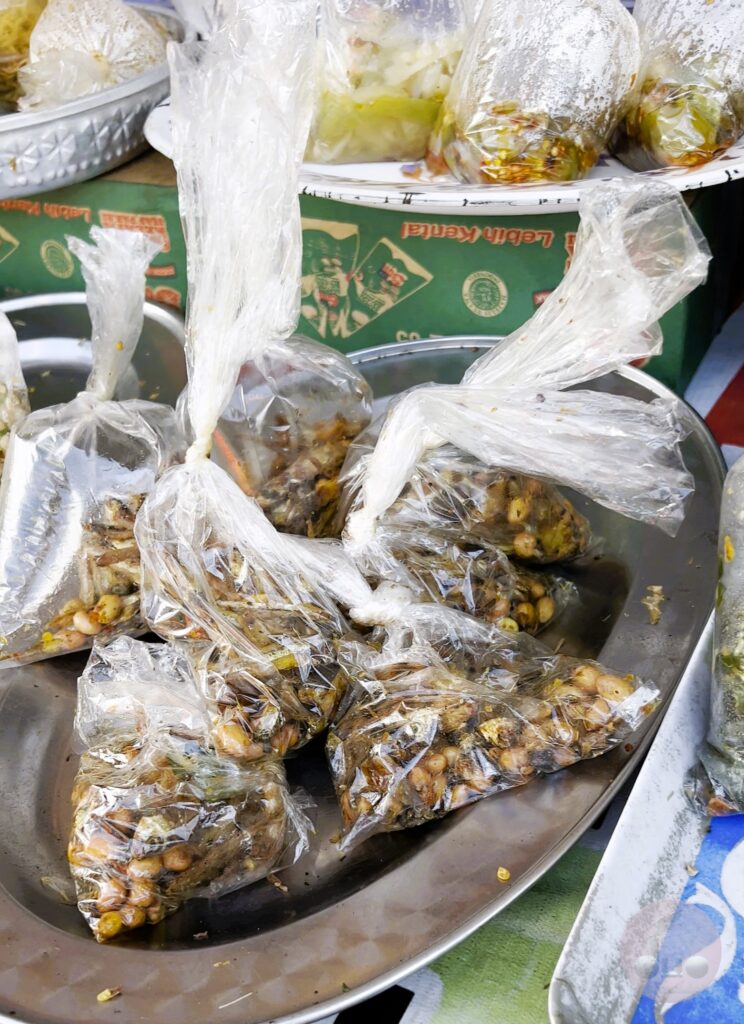
Rice
Rice forms the major part of food culture of Bali. No wonders considering Indonesia is third largest rice producing country. Rice (plain/fried) accompanies every dish you order in Bali. There is no concept of Chapati. Our guide informed us that both male and female members in most of the households in Bali work. Often they cook food once in a day and have the same food for the entire day. It saves a lot of time (fair point!).
Let’s dive deep into the island’s culinary experience that we had during our stay:
Nasi Goreng
This iconic dish is the national food of Bali. Nasi Goreng is highly adaptable and often includes a variety of ingredients based on regional variations and personal preferences. Common additions include diced chicken, shrimp, or tofu for protein, as well as vegetables like carrots, peas, and green onions for added texture and freshness. he key to a great Nasi Goreng lies in the seasoning, which includes a mix of shallots, garlic, tamarind, sweet soy sauce (kecap manis), and chili for a hint of heat. The combination of these elements creates a savory, slightly sweet, and mildly tangy flavor profile. Traditionally fried shallots, cucumber slices, and a fried egg on top accompany it. Its vibrant presentation makes Nasi Goreng popular. A typical Nasi Goreng should not cost you more than 40.000 IDR. It can be as low as 15.000-25.000 IDR in a small Warung (cafe).

Mei goreng
Mei goreng is another wonderful dish which means fried noodles. The noodles may be instant noodles or regular noodles. Noodles replace the rice but, the cooking process is similar to Nasi Goreng. The price of Mei Goreng is maybe 5.000 IDR costlier than Nasi Goreng.

Ikan Goreng
Ikan means fish. There are several fish to choose from and as per the fish the name of the dish changes. They deep fry a whole fish and serve with cucumber, sambal and other greens. The spices used in Balinese cooking are very different from Indian spices but are none the less in flavors. This is a must try dish for non vegetarians. It can cost 20.000-35.000 IDR.
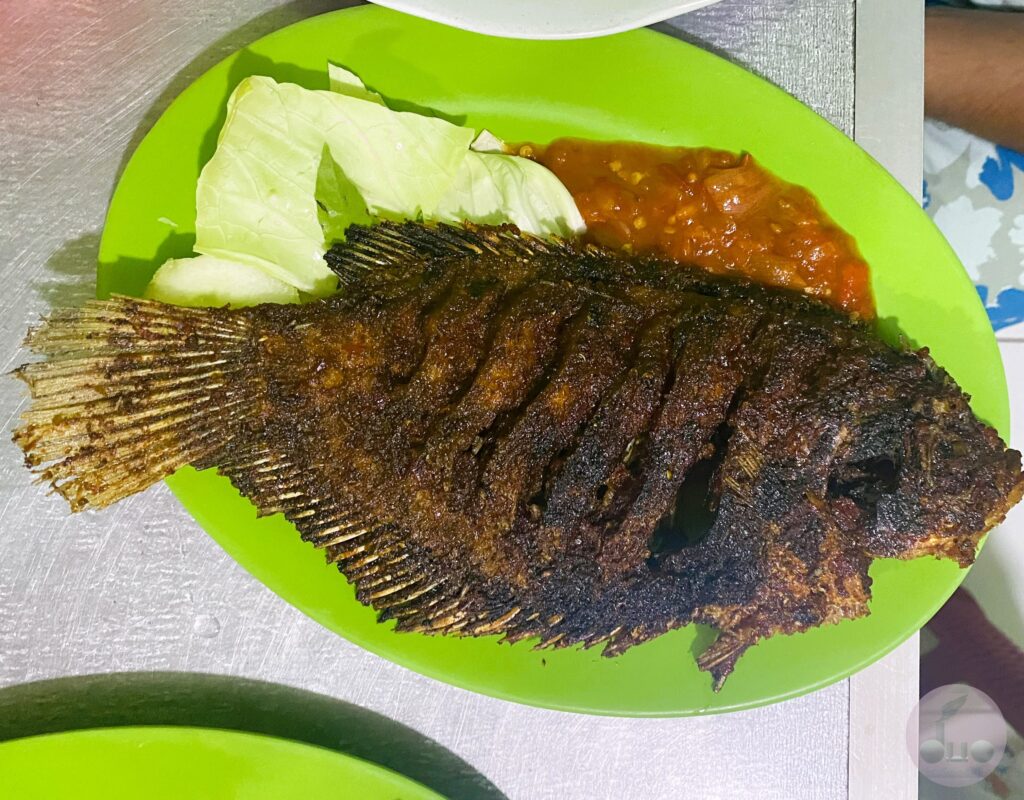
Nasi Campur
Nasi Campur, which translates to “mixed rice” in Bahasa Indonesia, is a popular and diverse dish found in Indonesian and Balinese cuisine. The dish features a medley of small portions of various side dishes served with rice, creating a colorful and flavorful ensemble on a single plate. It has 4-5 items of/ten rice, meat, vegetables, hard boiled eggs, tempeh/tofu, fired shallots and sambal. It forms a mojor part of the local food of Bali. The cost of it can range from 30.000-50.000 IDR again depending on what you get on plate and where you are eating.

Ayam Asam Manis
Ayam Asam Manis is a tantalizing blend of sweet and sour flavors with a touch of aromatic spices. This dish typically features succulent pieces of chicken, marinated and slowly simmered in this flavorful sauce made by combining tamarind, palm sugar, and a variety of Balinese spices. This sauce is the star of the dish. To garnish the dish fresh herbs, such as cilantro or basil, add a burst of freshness to each bite. It will cost about 50.000 IDR.


Soun Goreng
Commonly known as fried glass noodles, Soun Goreng features translucent, thin glass noodles made from mung bean starch. It absorbs the rich aromas and flavors of the ingredients. The glass noodles are typically stir-fried with an array of fresh and savory ingredients. Common additions include a mix of colorful vegetables such as bell peppers, carrots, and cabbage, providing a delightful crunch and visual appeal. The dish may also incorporate protein sources like chicken, shrimp, or tofu, enhancing its overall texture and taste. It may cost around 40.000-45.000 IDR.

Ayam curry
Balinese Ayam Curry, though not as iconic as some local specialties, is dish of an Indian/Malaysian influence with a Balinese twist. It incorporates local ingredients and flavors. The curry typically features succulent pieces of chicken cooked in a rich and fragrant curry sauce. A blend of Balinese spices and ingredients like such as turmeric, galangal, lemongrass, shallots, garlic, and ginger, coconut milk, kaffir lime leaves, torch ginger flower, or local varieties of chili peppers infuse the sauce. All creating a unique and harmonious flavor profile. The cost of this fusion dish is around 45.000 IDR.

Ayam Bakar
Ayam Bakar is a popular Indonesian and Balinese dish that translates to “grilled chicken” in English. Its distinctive flavor comes from marinating the chicken in a rich blend of Indonesian spices before grilling or roasting it to perfection. Ayam Bakar is a favorite dish at Indonesian family gatherings, celebrations, and street food stalls. The balance of sweet and savory notes, combined with the smokiness from the grilling process, makes it a delicious and beloved part of food culture of Bali. It has a 4 step process of preparation: marination, grilling, basting, and finally, serving. Its cost ranges from 40.000 IDR to 75.000 IDR.
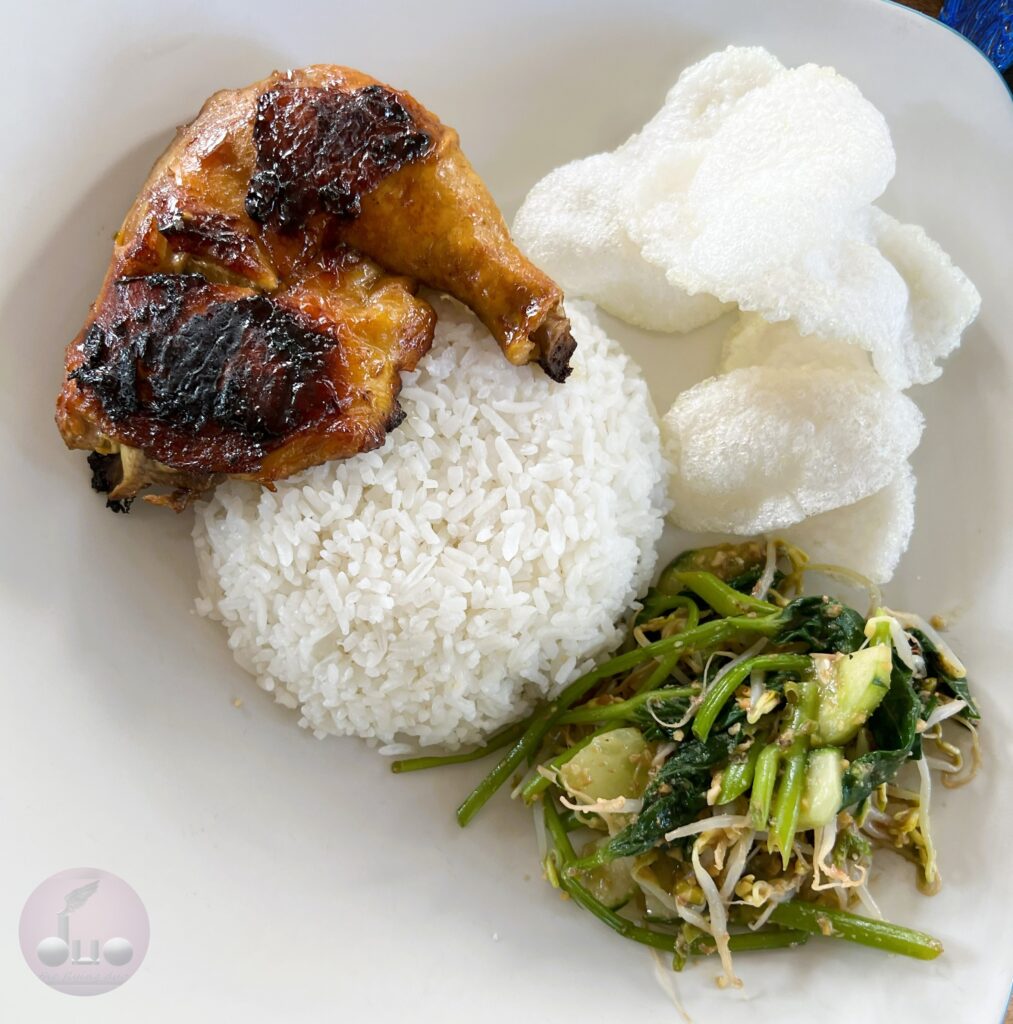
Bebek Bakar
The Bebek Bakar is nothing but grilled duck. The process is same as of Ayam Bakar. The difference is in the tender texture of the duck which makes this dish tastier. This dish also forms an important part of gatherings and celebrations. It can cost you anywhere around 90.000 to 125.000 IDR.
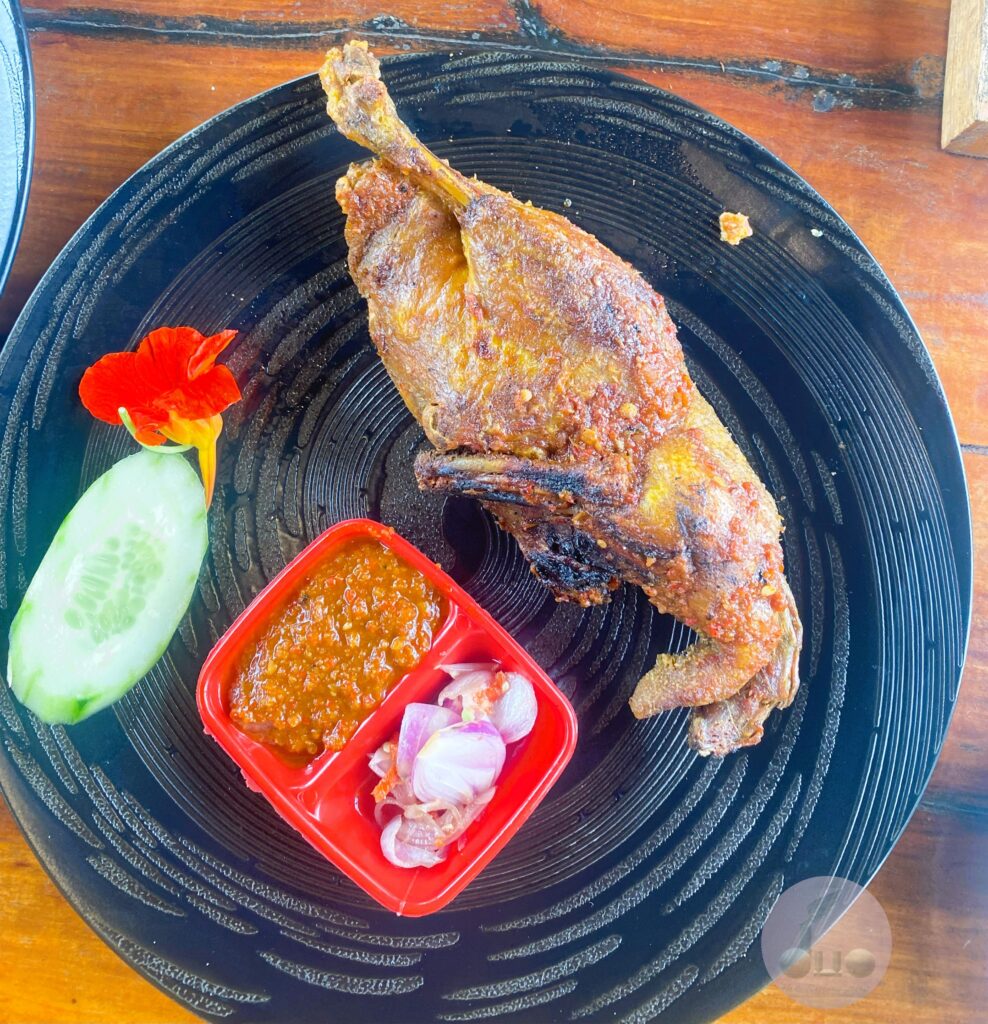
Soto Ayam
This iconic Indonesian dish is not only a culinary delight but also a reflection of the country’s diverse and flavorful gastronomic heritage. Whether enjoyed as a comforting meal on a rainy day or as a festive dish during celebrations, Soto Ayam holds a special place in the hearts and palates of Indonesian food enthusiasts. It is typically served in a bowl, with the shredded chicken and rice submerged in the aromatic broth. Diners can customize their soup by adding condiments and garnishes like lime, sambal, celery, shallots etc. according to their preferences. Kuah or the broth is the heart of this dish. Soto Ayam may cost you around 40.000 IDR.

Gado Gado
Gado Gado is a well-known Indonesian dish that is popular throughout the country, including Bali. While it is not originally from Bali, Gado Gado is a versatile and flavorful dish that features a mix of vegetables, tofu, tempeh, and hard-boiled eggs, all generously topped with a peanut sauce. typically includes a variety of blanched or steamed vegetables such as cabbage, bean sprouts, spinach, potatoes, and long beans. The highlight of Gado Gado is the peanut sauce which has ground roasted peanuts, shallots, garlic, palm sugar, tamarind, lime leaves, and various spices. The sauce is rich, savory, slightly sweet, and has a hint of tanginess. If you want something vegetarian, you may skip the egg on it. Price of Gado-Gado can be around 45.000 IDR.

Cap Cay or Cap Cai
This stir-fried vegetable dish reflects the influence of Chinese culinary traditions in Indonesian cooking. Capcay typically includes a colorful array of vegetables such as carrots, cabbage, mushrooms, baby corn, snow peas, and bell peppers. The choice of vegetables may vary based on personal preferences and availability. The protein source may be chicken, shrimp or both. The flavour of the dish comes from a savory and umami-rich sauce made from a combination of oyster sauce, soy sauce, garlic, ginger, and sometimes chicken broth. Additional seasonings may include salt, pepper, and sometimes a touch of sugar to balance the flavors. It may cost 50.000 IDR or more at most Warung.

Kuah
“Kuah” is an Indonesian term that translates to “soup” or “broth” in English. The composition of kuah can vary widely depending on the specific dish. It may include ingredients such as meat or vegetable stock, herbs, spices, coconut milk, and other flavor-enhancing elements. The use of different ingredients and seasonings gives rise to a diverse range of kuah varieties, each contributing a unique taste profile to the dish it accompanies. While a simple Kuah may be priced between 10.000-15.000 IDR, more advanced versions may be priced upto 40.000 IDR.

Martabak
Martabak, also known as Murtabak, is a popular street food of Bali that has become a favorite snack and indulgence. It comes in two main varieties: Martabak Telur and Martabak Manis. Martabak Telur is a savory and stuffed pancake filled with a mixture of eggs, ground meat (often a combination of beef and/or lamb), green onions, and sometimes chopped cabbage. The filling is seasoned with a blend of spices, including garlic, shallots, and curry powder. Martabak Manis is a sweet and thick pancake filled with various sweet ingredients. The filling may include chocolate sprinkles, crushed peanuts, condensed milk, cheese, and sometimes butter. It is priced at 15.000 to 25.000 IDR. Different variety can cost you up to 50.000 IDR as well.
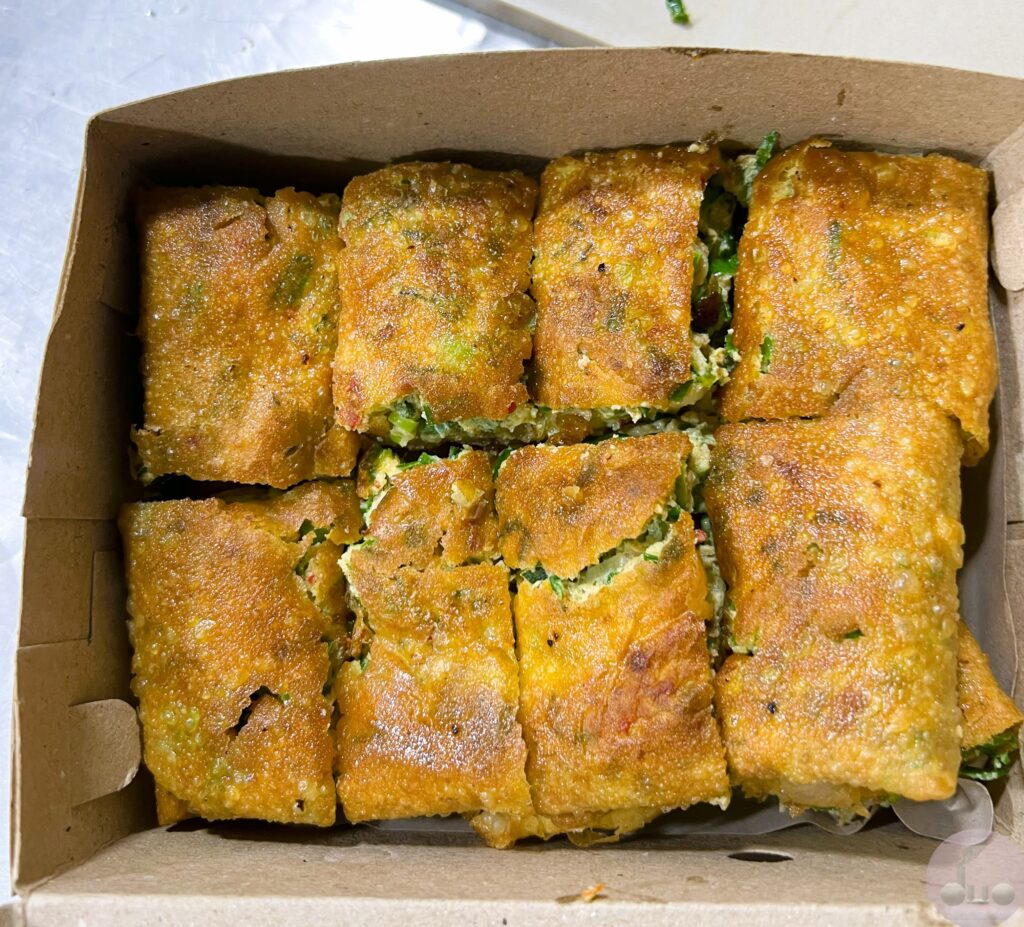
Satay
Satay are similar to the Seekh Kebabs except they have a completely different flavor. It is another popular street food of Bali that is widely enjoyed throughout Southeast Asia, with variations found in Indonesia, Malaysia, Thailand, and other neighboring countries. It typically consists of skewered and grilled or barbecued meat, served with a flavorful dipping sauce. Satay is a favorite street food appreciated for its savory, smoky, and often slightly sweet flavors. In our opinion we did not like it that much because of its sweet inclination. We liked the peanut dip sauce with which it was served. It costs around 5.000-10.000 IDR per skew.
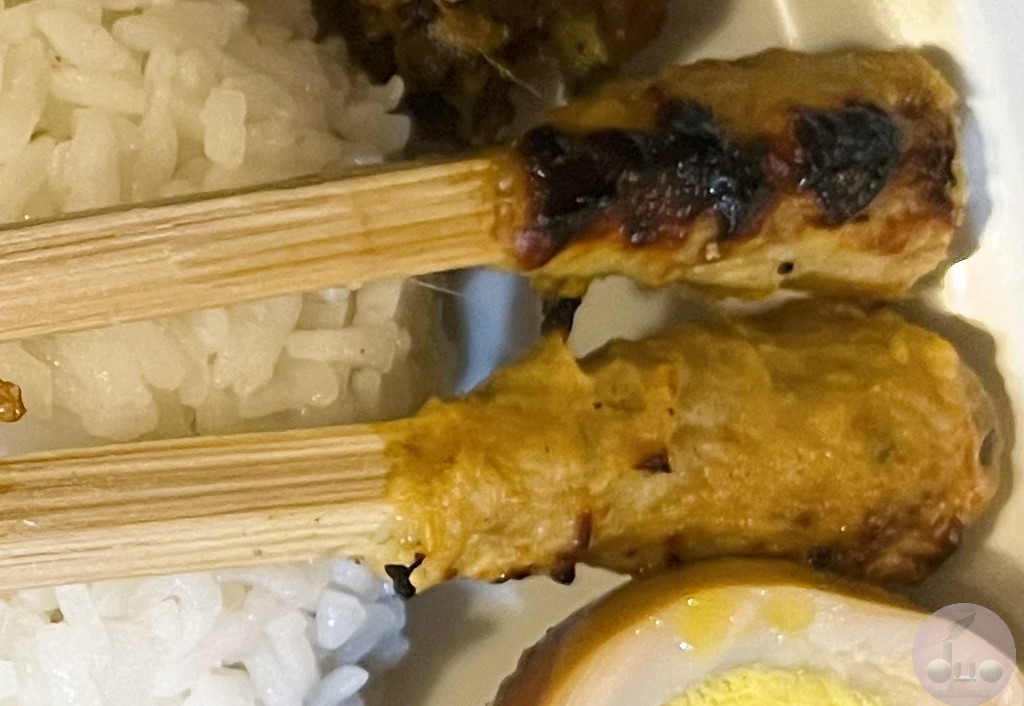

Sambal
Sambal is a versatile and fiery condiment that is a staple part of the food in Bali. It is a spicy chili-based sauce that comes in various regional variations, each with its own unique flavor profile. Sambal is used to add heat, depth, and complexity to a wide range of dishes, from simple street food to elaborate meals. It can spice up even a plain steamed rice which is always served with sambal in Indonesia. The primary ingredient of sambal is chilly which adds heat and the vibrant color. It also consists of shallots and garlic to give a flavoured base. Vinegar or tamarind is used to balance out the heat. Sometimes, sugar may be added to give the sambal a little sweetness. It is mostly consumed4 as a condiment or a dip sauce. There are many variations of the sambal.

Kopi
Kopi is the term for coffee on the island of Bali. The local varieties grow in and around the Kintamani hills. There are different varieties of coffee, including Robusta and Arabica. But, the most popular coffee in Bali is the Luwak coffee. Luwak is a mongoose like animal. This coffee is very peculiar in that this animal is fed the coffee beans and it travels through the gut of the animal where the enzymes act on it. The creature then excretes the beans. These beans are then cleaned, dried and ground to make Luwak coffee. Balinese people like their coffee strong and use condensed milk in it.
This is not an exhaustive list of items in the Balinese cuisine. It is only the list of items that we tried. Another very important traditional festive food item of Bali is Babi Guling (roasted pork). For more suggestions on Bali trip read this post. If you want to know the itinerary and budget for a Bali trip click here.
